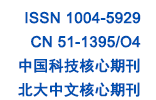



掺磷TiO2优化TiO2/MBA/Ag三明治结构的SERS性能
鲍闻渊,李利军,冯军,刘腾,程昊,黄文艺
掺磷TiO2优化TiO2/MBA/Ag三明治结构的SERS性能
Phosphorus doping to improve the Surface-enhanced Raman scattering property of TiO2 in TiO2/MBA/Ag sandwich structure
| {{custom_ref.label}} |
{{custom_citation.content}}
{{custom_citation.annotation}}
|
/
| 〈 |
|
〉 |